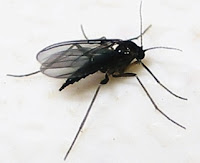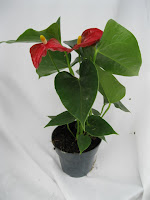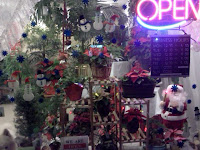 |
| Fungas Gnat |
Because most Christmas plants are grown so quickly and in large numbers in the greenhouses, they are more susceptible to disease and insect infestation. It is easy for a few (or a lot) of plants to escape the growers' efforts to control problems. The fungus gnat fly will stay close to the plants. The fly itself is not only annoying but will lay more eggs. Herein lies the real danger. They will quickly infest any nearby houseplants. If left undetected and untreated, fungus gnats will soon be in all of your plants. It is the larva living in the top inch or so of the soil that causes the damage to your plants by eating away at the plants' fine root hairs. Slowly but surely your plants will begin to suffer.
So look for this pest. Check the foliage area for the fly and lightly cultivate/disturb the top inch of soil looking for more flies and larvae. Should you find any, quickly quarantine the infected plant(s) from the rest of your plants. The fungus gnat looks very similar to a fruit fly but it will be smaller and darker and they fly very fast. Should you find them, you can
- quarantine the plant until after Christmas
- discard the plant
- install yellow sticky traps to catch flies and measure the extent of the problem
- repot the plant with complete new soilless potting mix
- treat the plant with the right insecticide.
Plants For All retail store at
66 Dawson Road in Guelph will now be open Saturdays until Christmas from 11am to 3 pm.Exclusive Save 15% Blog Offer - Plants For All is a small independent plant shop and we would like a chance at your tropical plant-buying business. From now through to Christmas, I'll be updating this blog frequently to discuss Christmas plant topics and feature some of our products. When you come into our store, mention this exclusive blog offer and receive 15% off of your entire purchase - now through to Christmas. We would love to see you.
Here is a quick peek - Christmas at Plants For All. Check out this short video. I will be in the store this Saturday, December 22 from 11am to 3pm. I would love for you to come and visit. Directions are here.


























